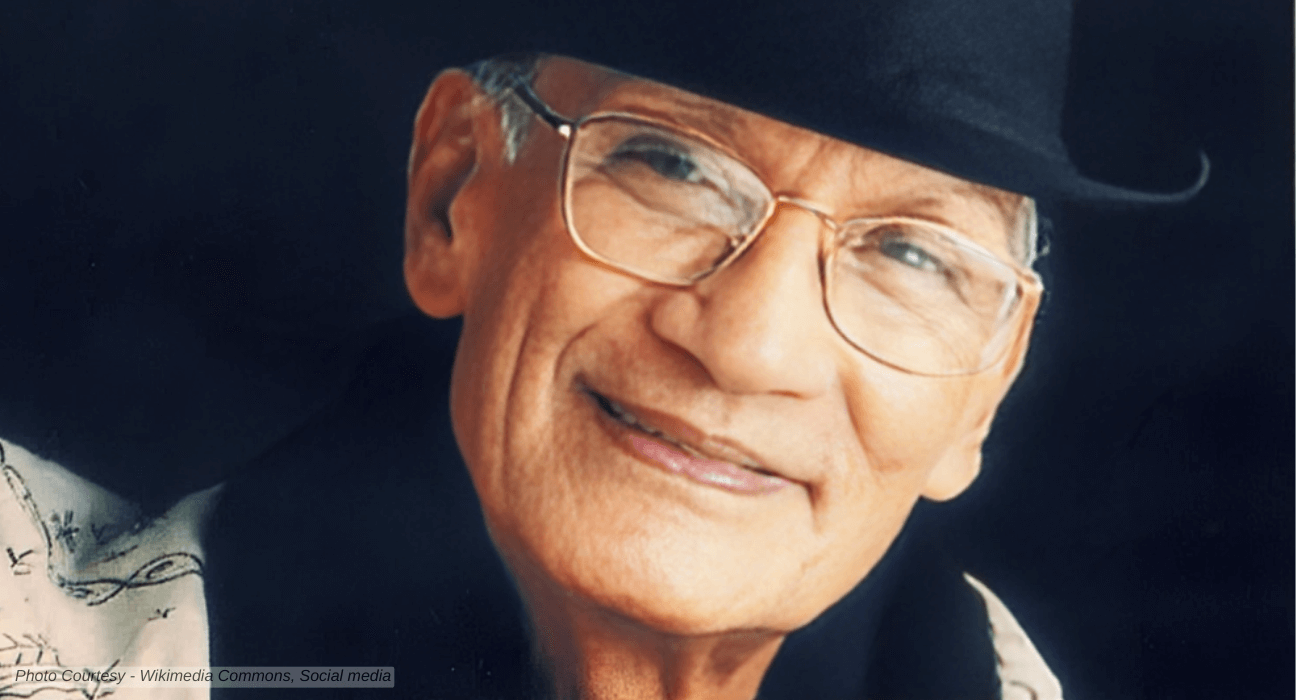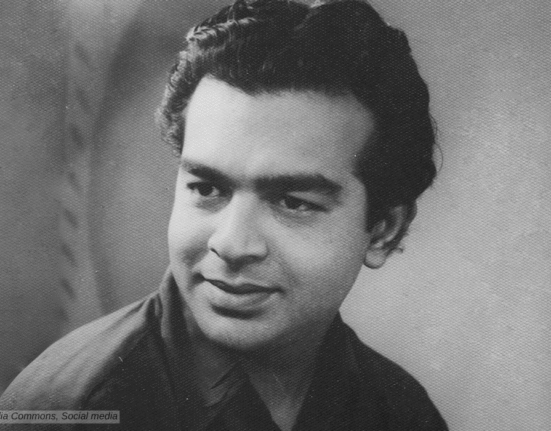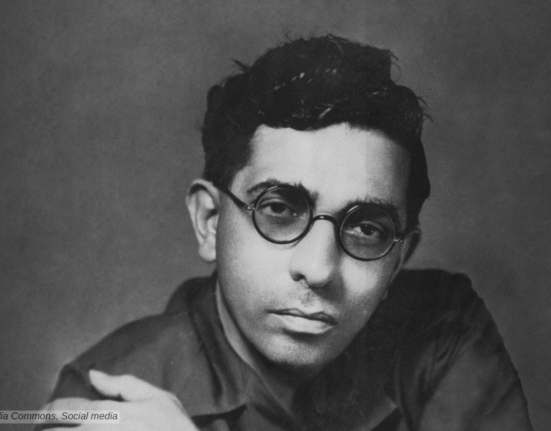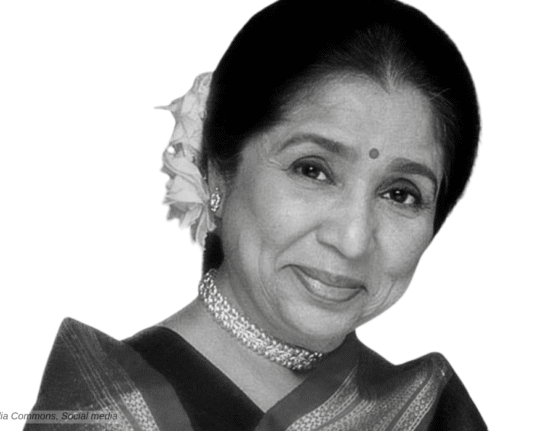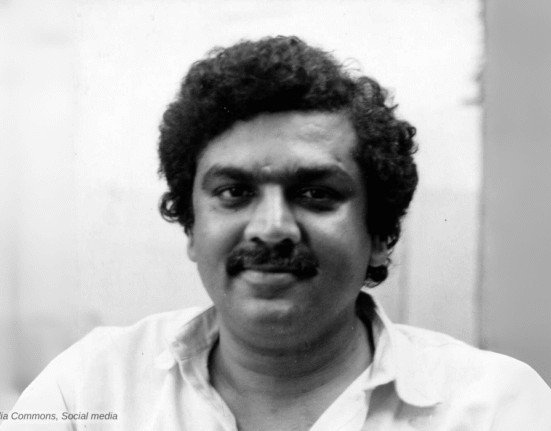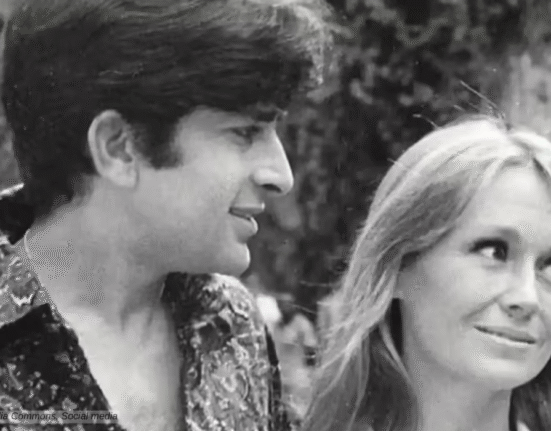Known for his characteristic rhythm, naughty melodies, and his iconic use of Tonga beats, OP Nayyar was one of the most successful music directors of all time, with blockbusters like “CID,” “Mr. & Mrs. 55,” “Naya Daur,” “Tumsa Nahin Dekha,” “Howrah Bridge,” “Ek Musafir Ek Haseena,” “Kashmir Ki Kali,” “Mere Sanam,” “Phir Wohi Dil Laya Hoon,” “Baharen Phir Bhi Aayengi,” and many more.
Early Life
Omkar Prasad Nayyar, popularly known as O. P. Nayyar, was born on January 16, 1926, in Lahore. He belonged to a middle-class family with no connections in the music industry. His father worked as a chemist at a local medical store. Nayyar’s early interest in music was evident as he often sang at local singing competitions and events. Despite not receiving any formal training in music, his natural musical instincts and soft voice mesmerised everyone.
OP Nayyar’s professional journey in music began at a young age when he joined All India Radio, Lahore, as an artist at the age of 11. By 17, he had composed two songs, one of which, “Preetam Aan Milo,” sung by C. H. Atma, became very popular. After the partition of India in 1947, Nayyar moved to Amritsar. After some time he came to Bombay, where he began working in the late 1940s.
His first break came as a background music director for the film “Kaneez” (1949). He then composed music for “Aasmaan” (1952), produced by Dalsukh M. Pancholi, starring Nasir Khan, Shyama, and Veena. Next comes “Chham Chhama Chham (1952)” and “Baaz (1953),” which has the haunting “Ae Watan Ke Naujawan.”
OP Nayyar The King Of Naughty Melodies

Nayyar’s breakthrough movie comes with Gurudutt‘s Aar Paar (1954); the movie established him as a coming-of-age music director. Songs like “Babuji Dheere Chalna,” “Kabhi Aar, Kabhi Paar,” “Sun Sun, Sun Sun Zalima,” and “Ja Ja Ja Ja Bewafa” become a rage.
In 1956 comes Naya Daur, starring biggies Dilip Kumar and Vyjayanthimala, which has a superlative chorus song (Saathi haath badhana), an infectious patriotic song (Ye desh hai veer jawano ka), and the unforgettable “Maang ke saath tumhara.” It also has Rafi-Asha’s all-time blockbuster, “Uden Jab Jab Zulfen Teri, and a Nuashad brand of song, “Aana hai to Aa,” a song that has been described as sheer perfection. Naya Daur won him the Filmfare Award for Best Music.
In the ’50s, his famous chartbusters included Asha Bhosle-Kishore Kumar’s “Piya piya piya” (Baap Re Baap) and Geeta-Rafi’s “Aye Dil Hai Mushkil Jeena Yahaan (CID) & “Jaane Kahan Mera Jigar Gaya Jee” (Mr. & Mrs. 55), Asha’s “Aaiye meherbaan” (Howrah Bridge), and Geeta Dutt’s “Mera naam Chin Chin Chu” (Howrah Bridge), Mohammed Rafi’s “Raat bhar ka hai mehmaan andhera” (Sone Ki Chidiya), Kishore-Shamshad Begum’s “Meri neendon mein tum” and Asha-Rafi’s “Ek pardesi mera dil le gaya” (Phagun).
The Genius With A Temper
He made the foot-tapping “tonga beat” songs his trademark. OP live shows in India’s metros always feature songs such as Maang ke saath tumhara (Naya Daur, 1957); Piya piya piya (Baap Re Baap, 1957); Ae dil hai mushkil (CID, 1956); and Yun to hamne lakh haseen (Tumsa Nahin Dekha, 1957).
OP Nayyar’s music was characterised by its rhythmic beats, catchy tunes, and innovative orchestration. His collaborations with leading playback singers like Geeta Dutt, Shamshad Begum, and Mohammed Rafi produced numerous chartbusters. Known for their positivity, infectious rhythms, and orchestral brilliance, Nayyar’s songs were a rage in their time and became classics with time. His innovative use of instruments like the accordion, clarinet, cello, piano, and sarangi set him apart from his contemporaries.
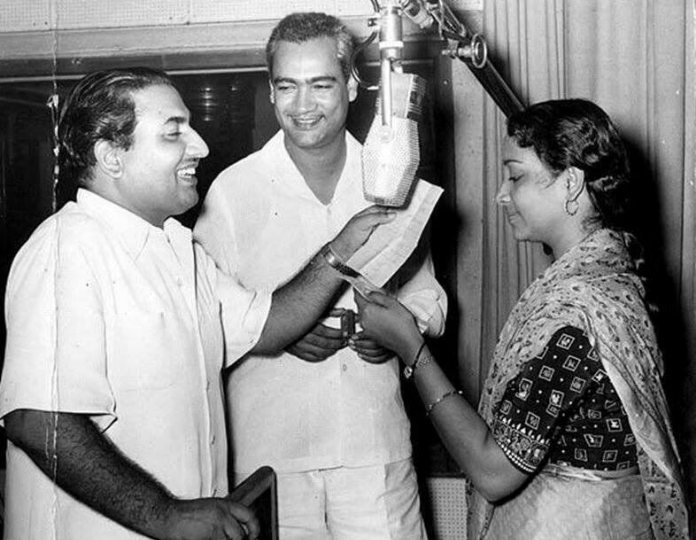

Geeta Dutt, one of the greatest playback singers, remarked, “He composes with feelings, not words.” Madhubala, enchanted by his music, even offered to reduce her fee for films featuring his compositions.
OP Nayyar and Asha
Nayyar is credited with discovering and mentoring Asha Bhosle, helping her develop her unique style. Their collaboration resulted in numerous memorable songs.
The 1960s was the golden period of Nayyar when he gave hits after hits, which include Ek Musafir Ek Hasina (1962), Phir Wohi Dil Laya Hoon (1963), Kashmir Ki Kali (1964), Mere Sanam (1965), Baharen Phir Bhi Aayengi (1966), Yeh Raat Phir Na Aayegi (1966), Kismat (1968), Humsaya (1968), and Sambandh (1969).
Rafi and “Asha’s Aap yoonhi agar” (Ek Musafir Ek Haseena), Mohd Rafi’s enchanting “Aap Ke Haseen Rukh” (from Baharen Phir Bhi Aayengi), “Banda parvar, Thaam lo jigar (Phir Wahi Dil Laya Hoon), “Deewana Hua Badal, Sawan Ki Ghata Chhayi” from Kashmir ki Kali, Asha’s “Yeh Hai Reshmi Zulfon Ka” from Mere Sanam, Mahendra Kapoor’s “Badal Jaaye Agar Maali, Chaman Hotaa Nahi Khaali” in (Bahaaren Phir Bhi Aayengi), “Kajra mohabbatwala” by Asha and Shamshad (Kismet), Mukesh’s “Chal Akelaa, Chal Akelaa(Sambandh), and many more hits also adorned that phase.
The Asha-OP partnership, which was started with Naya Daur, ended with the film Pran Jaaye Par Vachan Na Jaaye. It was a bitter parting. Though Asha’s ethereally beautiful song in the film “Chain se hum ko kabhi” won the Filmfare award. Asha didn’t accept it. Why they parted ways in 1974, neither of them ever talked about it.
Later Life and Legacy
Sadly, OP Nayyar could not be his old self when he attempted several comebacks. His films Khoon Ka Badla Khoon and Heera Moti in the late ’70s cant create his ususal magic. In 1990s he comeback with Nischaiy and Zid, a small reminder of his genius.
OP Nayyar died on 28 January 2007, survived by his wife, three daughters, and a son.
Beyond his musical genius, Nayyar was known for his unique personality and idiosyncrasies. He never worked with Lata Mangeshkar. OP said that Lata lacks the khanak that Geeta, Shamshad Begum, and Asha Ji have in their voices. He famously fought with his favourite singer, Rafi Saab. He vowed he would produce another Rafi and for almost three years worked exclusively with Mahendra Kapoor. But his love for Rafi saab overcomes his anger, and he comes back to Rafi.
He often preferred simplicity in his arrangements, shunning complex orchestrations. Despite facing professional challenges, his impact on the golden era of Hindi film music remains enduring. O.P. Nayyar’s legacy lives on through the timeless melodies that continue to resonate with music lovers, making him a revered figure in the history of Indian film music. Even in Pakistan, Nayyar hailed as “the son of the soil,” showcasing the universal appeal of his musical genius.
OP Nayyar on IMDB



